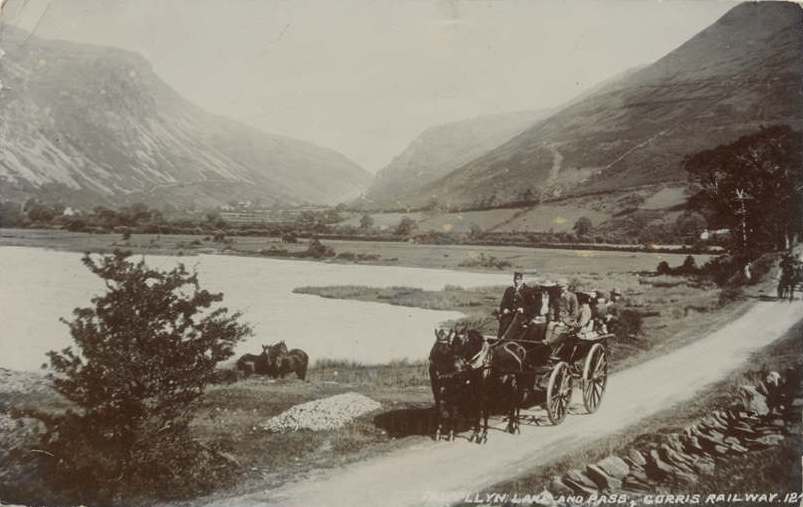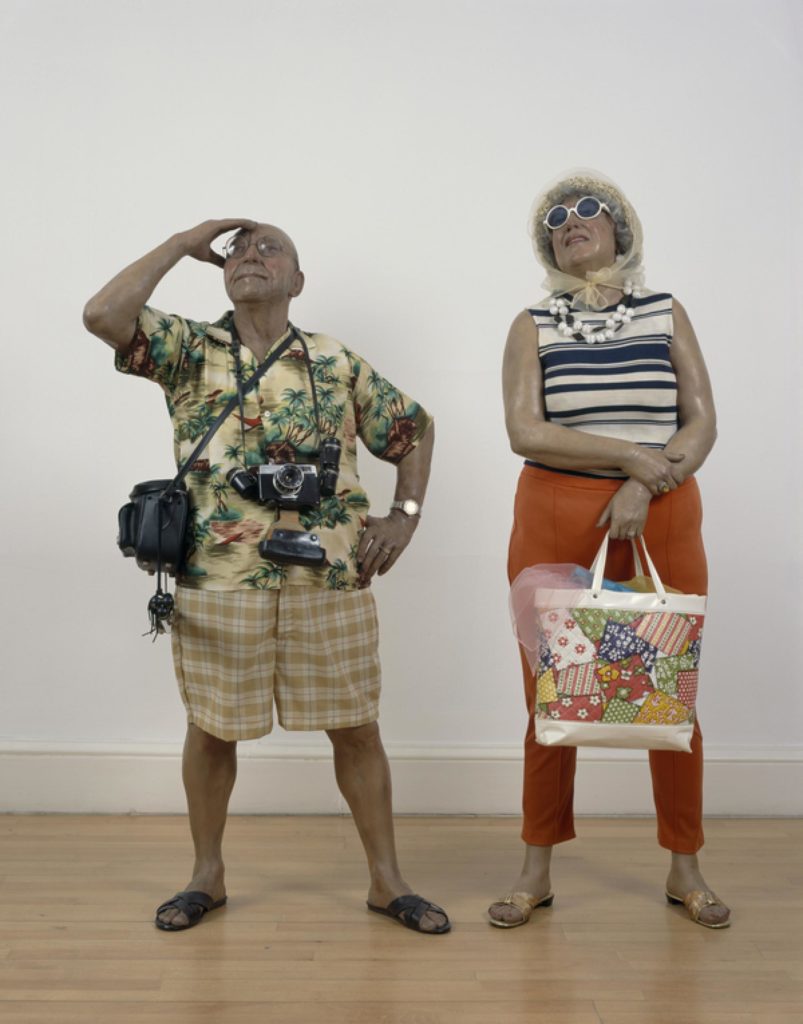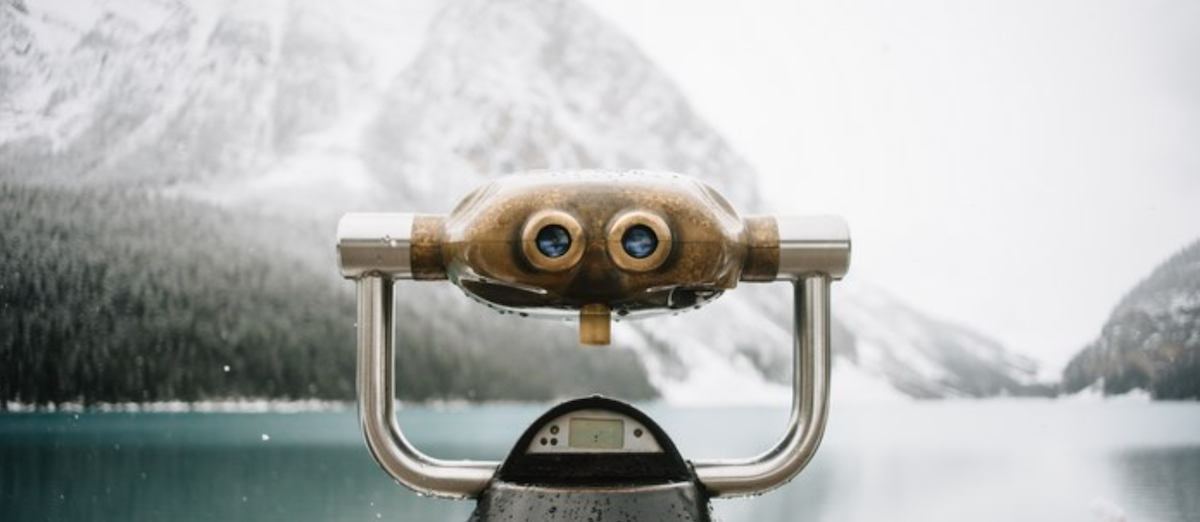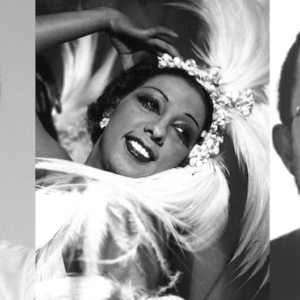As a sociocultural and material force, tourism is so large as to be incomprehensible. The difficulty of understanding it in full requires us to break it down into parts, an exercise not unlike the act of travel itself: We can’t fully take in the places we visit, so we instead form impressions from bits and pieces.
These intangible souvenirs are fallible and prone to fade, though; when someone asks to see them, there’s nothing to show. Photography provides a solution, enabling us to shore up memory and capture passing moments. While the act of taking a picture has long been second nature for many of us, examining its origins provides an interesting link to our current moment. Although we can trace our archival imperative to the early days of leisure travel, armed conflict and a global pandemic truly solidified photography’s place in mass culture. The First World War along with the 1918 Spanish flu resulted in what the historian Tammy S. Gordon refers to as “a memory emergency.” Confronted with death, the need to create a visual archive of life increased. A need, it seems, we’ve carried with us since.
The first portable film camera was released in 1888. Invented by the American entrepreneur George Eastman and manufactured in Rochester, New York, the Kodak camera originally sold for $25. “You press the button, we do the rest,” was the product’s advertising slogan, denoting the newfound ease of image making. A camera user with little to no knowledge of photography could fill a roll of film with pictures, then send the camera to the Kodak company—the company would ship the camera back loaded with a fresh roll of film, along with developed photographs.
In 1900, the Eastman Kodak Company introduced the Brownie. Like the Kodak, the camera was touted for its ease of use, so much so that it was initially marketed for children. Along with being user-friendly and compact, it was also affordable. Retailed at $1, the Brownie made snapshot photography accessible to the masses, reshaping the cultural practice of nostalgia and creating a reliance on photography as a means to remember.

As Gordon points out in her recent book The Mass Production of Memory: Travel and Personal Archiving in the Age of the Kodak, 19th-century American industrialization caused perceptions of time to shift as the pace of life sped up. In the face of major technological innovation, photography provided a measure of control, allowing camera users to document their lives as well as “the scenes and people they felt would be inevitably changed forever by modernity.” At the same time, photography contributed to the acceleration, as the personal camera encouraged a cultural tendency to turn free time into work.
To make sense of this custom—which remains, last I checked, alive and well—consider the vacation. “A vacation without a Kodak is a vacation wasted,” reads an Eastman Kodak advertisement from 1902. Honing in on our seemingly innate predisposition to document life for the sake of posterity, the company marketed the camera not only as an accessory to leisure, but as an essential feature of it. Documentation became part of the work of sightseeing.
I wonder what the visual record from this time will show. What will we choose to remember?As far back as the Grand Tour—the antiquated practice, instituted in the 16th-century, of young, upper-class European men taking extended trips abroad in service of their education—self-documentation has been an important part of the tourist experience. The oil painting of the young aristocrat posed in front of an ancient ruin was the precursor to the shirtless millennial standing on top of a mountain in his dating profile picture. These images gesture at self-worth, reinforcing associations between mobility and conquest. To have been there is one thing, they tell us; to have proof, another.
Just as modernity has democratized the tourist portrait, it has also made travel available to the general populace. In the second half of the 20th century, cheap flights and paid vacations helped international travel become part of mass culture and a cornerstone of the world’s economy. In 1950, there were around 25 million international tourist arrivals; in 2019, there were 1.5 billion. Tourism now generates ten percent of the global GDP and employs one in ten of the world’s workers.
 Circa 1907, Corris Railway charabancs on the Grand Tour passing Talyllyn, Wales.
Circa 1907, Corris Railway charabancs on the Grand Tour passing Talyllyn, Wales.
Or at least it did, before the world changed. This past December, the World Tourism Organization reported that 2020 was “the worst year on record in the history of tourism.” International travel fell by over 70 percent, setting tourism back to 1990 levels. In terms of economic losses, the pandemic has been ten times worse than the global financial crisis of 2009.
“The pandemic has proved the centrality of tourism through tourism’s omission,” writes the Italian journalist and social theorist Marco d’Eramo. “Once this industry ceased, not only airlines and shipping companies but aircraft manufacturers and shipyards found themselves on the verge of bankruptcy.”
D’Eramo’s newly-translated book The World in a Selfie: An Inquiry Into the Tourist Age is a sprawling assessment of what he refers to as “the heaviest, most polluting and most important industry of the 21st century.” Along with parsing tourism’s social and environmental impacts, d’Eramo stresses the immense size of its economic footprint. Airlines, cruise lines, hotels, restaurants, casinos, travel agencies, guidebook publishers, souvenir manufacturers, and gift shops are just a few of the enterprises in tourism’s massive network of commercial operations. Propping up the whole affair is an unorganized labor force composed of tour guides, street performers, transit operators, trash collectors, sex workers, musicians, cashiers, desk clerks, maids, cooks, waitstaff, bartenders, and dishwashers, to name only a handful of the often underpaid, non-benefitted employees of the tourism industry.
The toll has yet to be fully calculated, but estimates suggest that between 100 to 120 million direct tourism jobs could disappear as a result of the pandemic. The travel industry’s collapse has produced an unusual reality in which stranded tourists, flights to nowhere, and deconstructed cruise ships all exist in the same blurry timeline. While it’s likely that COVID-19 will fundamentally change how we think of travel, this moment of staying in place could be useful for reflecting on why we go anywhere at all.
One answer to that question begins in the late 19th century, when American tourism was taking shape alongside scientific theories about the way humans see the external world. The German polymath Hermann von Helmholtz, who invented the ophthalmoscope, wrote that the human eye is insufficient for providing a full visual representation of the world. Fascinated by the physics of vision and perception, he established the concept of “unconscious inference”: to make up for the eyes’ imperfections, we rely on a reflex-like mechanism of the mind operating behind the scenes of awareness, where details are filled in and our understanding of external reality is formed.
During the time that Helmholtz devised his theory, a young Mark Twain was traveling overseas with a group of fellow Americans. In 1869, The Innocents Abroad, his first book, was published. While his novels are widely studied today, The Innocents Abroad was the author’s best-selling book during his lifetime; now deemed “one of the best-selling travel books of all time,” d’Eramo calls The Innocents Abroad “a testimony and satirical analysis of the revolution in organized tourism in its early days.”
Similarly, Gordon refers to it as “a parody of the sentimental travel narrative.” She cites the text as an example of “Americans’ anxiety over their own interest in the past.” While upper middle-class Americans identified with the power of past civilizations, they also sought to maintain an ambitious, progressive self-image; the camera resolved this tension, allowing American tourists to “lay claim to the past and at the same time assert their distinction from it as modern people with contemporary recording technology.”
If viewing tourism through a critical lens causes discomfort, it’s likely due to how the process leads to self-examination.From d’Eramo’s perspective, Twain sought confirmation that the images he had seen and the places he had read about in newspapers and books were real. It’s not a stretch to think that our travels could be guided by a similar impulse, what d’Eramo refers to as “the need to compare reality to imagination.” We burn through time, energy, and resources to satisfy our sightseeing curiosity, but the expense is usually beside the point. After all, what is vacation if not an escape?
*
“Every native of every place is a potential tourist, and every tourist is a native of somewhere,” writes Jamaica Kincaid in A Small Place. Published in 1988, the book-length essay is an unsparing critique of tourism, colonialism, and government corruption in the author’s home country of Antigua. Just as every native is a potential tourist, Kincaid posits, “Every native would like to find a way out, every native would like a rest, every native would like a tour. But some natives—most natives in the world—cannot go anywhere.” Tourism is a luxury typically reserved for people with money, dividing privileged travelers from those with no choice but to remain in place. It’s here, where people are “too poor to escape the reality of their lives,” that tourists seek to visit.
Rather than creating a shared understanding of the world, tourism often widens the chasm between the visitor and the visited, the viewer and the viewed. “When the natives see you, the tourist, they envy you,” Kindcaid writes, “they envy your ability to leave your own banality and boredom, they envy your ability to turn their own banality and boredom into a source of pleasure for yourself.”
If viewing tourism through a critical lens causes discomfort, it’s likely due to how the process leads to self-examination. As d’Eramo notes, tourism is a “mirror or magnifying glass for society.” He draws on the work of Erving Goffman, one of the most significant American sociologists of the previous century. Theorizing on the role-playing of everyday life, Goffman maintained that our presentations of self are fluid. In our attempts to influence perceptions of our own image, we change according to context. Elaborating on this behavior—which is by turns deliberate and unconscious—Goffman differentiated between front stage and back stage behavior: in the front stage we are performers, while back stage we are closer to our true selves.
“For Goffman the theatrical dimension of the relationship of the self to others is not an accessory,” writes d’Eramo. “In any interaction it will always be present; there is no opting out.”
Capturing true-to-life images of external reality has become so easy that it’s difficult not to take the ability for granted.Extending Goffman’s theory, d’Eramo connects the concept of the front stage and back stage to the “unmistakable theatricality” of the tourist city, in which workers underpin the sightseeing industry while also functioning as sights to be seen. By the same token, “every city must ‘play’ itself.” If this performance is, as d’Eramo argues, one that is reproduced throughout the world, an earnest appraisal of tourism will eventually lead to seeing past its facade. Every tourist a native, and every native an actor.
Yet, who plays what role is customarily dependent upon factors like race, class, and gender.
As Gordon notes, early marketing for portable cameras promoted travel while centering the experiences and perspectives of white, middle-class Americans. Against this backdrop, this same group of consumers utilized photography and tourism to make claims on public space that continue to inform our impressions of the world.
Perhaps some of the most iconic visual representations of American tourists can be found not in photography, but in sculpture. The life-sized figures created by the late Duane Hanson depict ordinary people engaged in typically unremarkable activities. “Tourists” is one of his most well-known works: Cast from live models, the sculpture depicts a man and woman who would not look out of place snowbirding in Florida, where Hanson spent the majority of his artistic career. Standing side-by-side, their attention aimed slightly skyward, the dress of these decontextualized sightseers gives them away—orange capris and a vaguely nautically-themed blouse; checkered shorts and a Hawaiian shirt; open-toe shoes. But what truly signifies the couple as tourists is the object hanging from the man’s neck: a camera manufactured by the Eastman Kodak Company.
 Duane Hanson, “Tourists.” Polyester resin and fibreglass, painted in oil, and mixed media. Photo by Antonia Reeve. © Estate of Duane Hanson / ARS, New York / DACS, London 2018. (National Galleries Scotland)
Duane Hanson, “Tourists.” Polyester resin and fibreglass, painted in oil, and mixed media. Photo by Antonia Reeve. © Estate of Duane Hanson / ARS, New York / DACS, London 2018. (National Galleries Scotland)
Following the creation of “Tourists” in 1970, visual themes related to travel and photography continued to appear in Hanson’s work. “It’s the human attitudes I’m after—fatigue, a bit of frustration, rejection,” Hanson said of his artistic practice. “To me, there is a kind of beauty in all this.” He died in 1996 at the age of 70, his lifespan likely shortened by the toxic resin and fixative fumes that were produced during his process.
The same year “Tourists” was created, a vastly different sculpture was constructed on the northeastern shore of Utah’s Great Salt Lake. “Spiral Jetty,” the site-specific masterwork of the late Robert Smithson, is made up of 6,650 tons of rock and earth jutting out into an endorheic basin to form a 1,500-foot-long and 15-feet-wide coil.
A little over three years after the earthwork was completed, Smithson died in a plane crash while surveying a site for a future piece. He was 35 years old. The “Spiral Jetty,” created at a time when the water level was particularly low, was fully submerged in the hypersaline lake not long after it was completed. About three decades later, regional droughts resulted in the work reemerging covered in salt crystals, bleached white by the passage of time. A 2003 article from The New York Times referred to the piece as “the most famous work of American art that almost nobody has ever seen in the flesh.”
Presently, whether a visitor to the “Spiral Jetty” can view the piece depends on the water levels of the lake. While nature once entirely hid the work, its remoteness continues to deter the casual observer. Still, people do visit, and the artwork is categorized on Google Maps as a “tourist attraction,” an ironic twist that would have not been lost on either Hanson or Smithson.
 Robert Smithson, “Spiral Jetty.” Photo via Wikimedia Commons.
Robert Smithson, “Spiral Jetty.” Photo via Wikimedia Commons.
If you happen to make it to the tiny town of Corinne, Utah, you’ll need to drive another 25 miles to get to the entrance of the Golden Spike National Historical Park, site of the final link in America’s first transcontinental railroad. After about six and a half low-speed miles down an unpaved road, you’ll find another unpaved road named for the artwork (or tourist attraction, depending on how you look at it) that sits an additional 15 minutes ahead. Your view as you drive will be of a big sky hovering over land that is rocky and arid, with rugged outlines of hills in the distance. Around the time you feel like you’re approaching the middle of nowhere, you’ll see a large body of water, and depending on your timing it could be anywhere from a monochrome gray to an otherworldly purple. The sky, too, can take on a surprisingly wide range of colors. At last, you’ll come to a dead end. Unable to drive any further, you’ll realize that you’ve reached your destination. You’ll get out of the car, stretch your limbs, and uphold the long-standing tradition of sightseeing.
*
Behind a glass case on the second floor of the George Eastman Museum in Rochester, New York is a handwritten note: “To my friends, my work is done—Why wait?” Penned in 1932, the brief message was Eastman’s last. Shortly after writing it, the 77-year-old father of photography—suffering from a painful disorder affecting his spine—laid on his bed, placed a wet cloth over his chest to prevent powder burns, and shot himself in the heart.
Not far from the museum—Eastman’s former estate and site of his death—the inventor’s ashes are buried beneath a marble pillar in an area formerly known as Kodak Park, the one-time home of the largest photographic product manufacturing facility in the world.
Capturing true-to-life images of external reality has become so easy that it’s difficult not to take the ability for granted. Using our phone’s camera as a tool to remember has become reflexive, as has posting our images online. Intentionally or not, we’re creating a record.
At present, we may be going through our own version of a memory emergency. Late last year, Christian Jarrett reported on the mental fatigue that has accompanied the pandemic for many people. He looked toward cognitive load theory, which conceptualizes the mind as an information processing system and provides a framework for understanding how we respond when overwhelmed. Routine tasks can be completed on auto-pilot thanks to long-term memory. New situations, however, require us to depend on working memory, which operates at a limited capacity and can only hold information for short periods. In times of disruption and uncertainty, our working memory is overloaded and our ability to process or retain what’s happening breaks down. Producing new information is easy, but taking it all in is a struggle.
While researching for this piece, I learned that the average life expectancy for Americans dropped by a full year as a result of the pandemic. We don’t yet have a conclusive national death count for 2020, but preliminary statistics suggest fatalities rose by 15 percent, the highest single-year spike since 1918. Geneticists studying transmission chains have traced the majority of the country’s initial outbreaks to New York, where thousands of people became infected with the virus and then seeded outbreaks throughout the country through travel.
In New Orleans—an early coronavirus hotspot and the city where I live—the proliferation of the virus has been directly linked to tourism. By studying genomic data and travel records, researchers deduced that the virus likely arrived with someone traveling from Texas about two weeks before Mardi Gras Day, the city’s massive annual celebration which draws hundreds of thousands of tourists from all over the world. From this single coronavirus case, it’s believed that around 50,000 people throughout the state of Louisiana were eventually infected.
Carnival season was quiet this year. Absent were the parades, marching bands, and throngs of costumed revelers that typically fill the streets on Mardi Gras Day. On social media, people found respite in nostalgia, sharing photographs from past celebrations. This sort of thing seems to be happening most everywhere. I think the pandemic has made us all a bit more wistful, retreating to memory to drive back the pain of a severely fucked-up year. I wonder what the visual record from this time will show. What will we choose to remember? And what will be the cost of forgetting?



